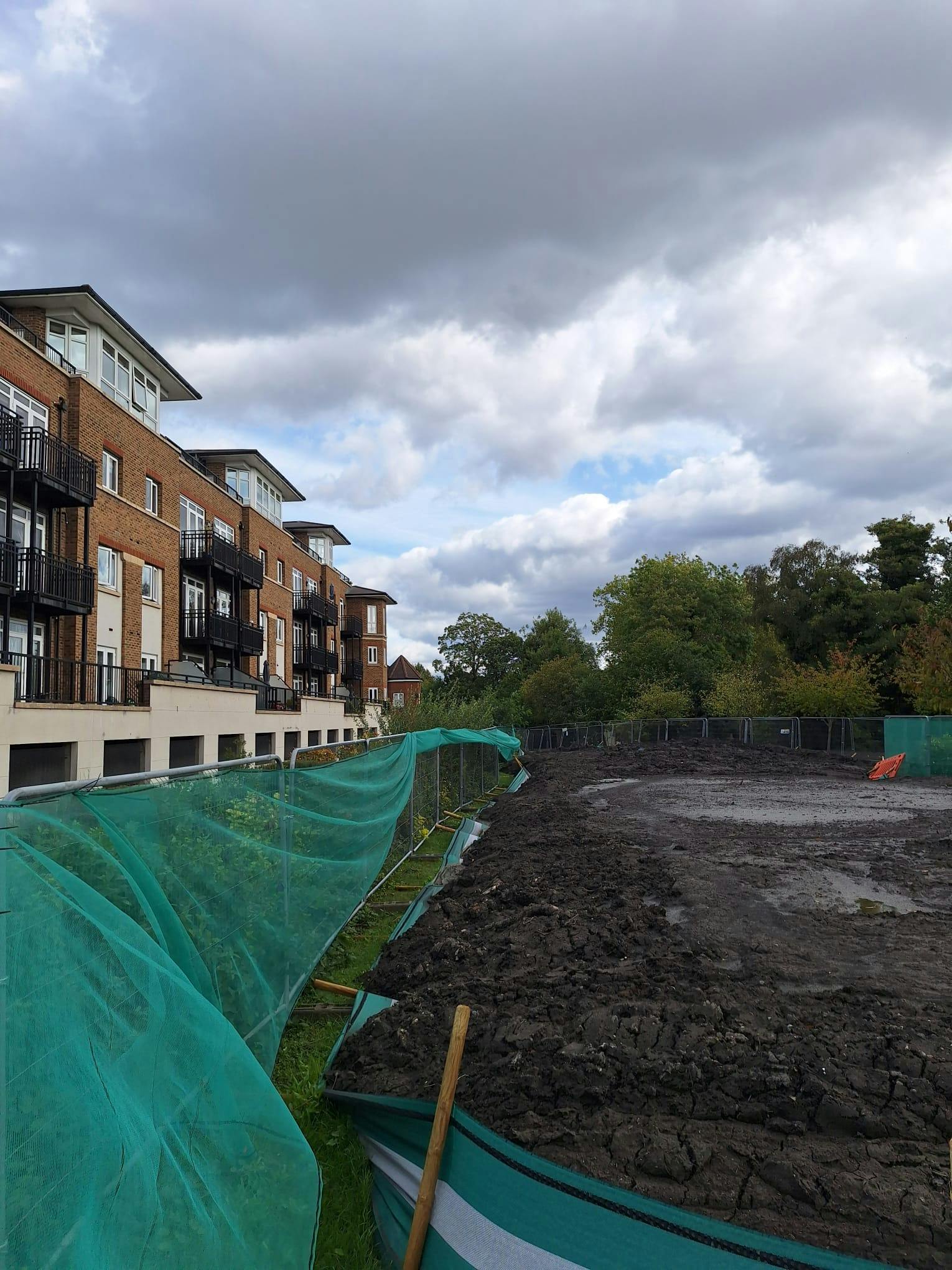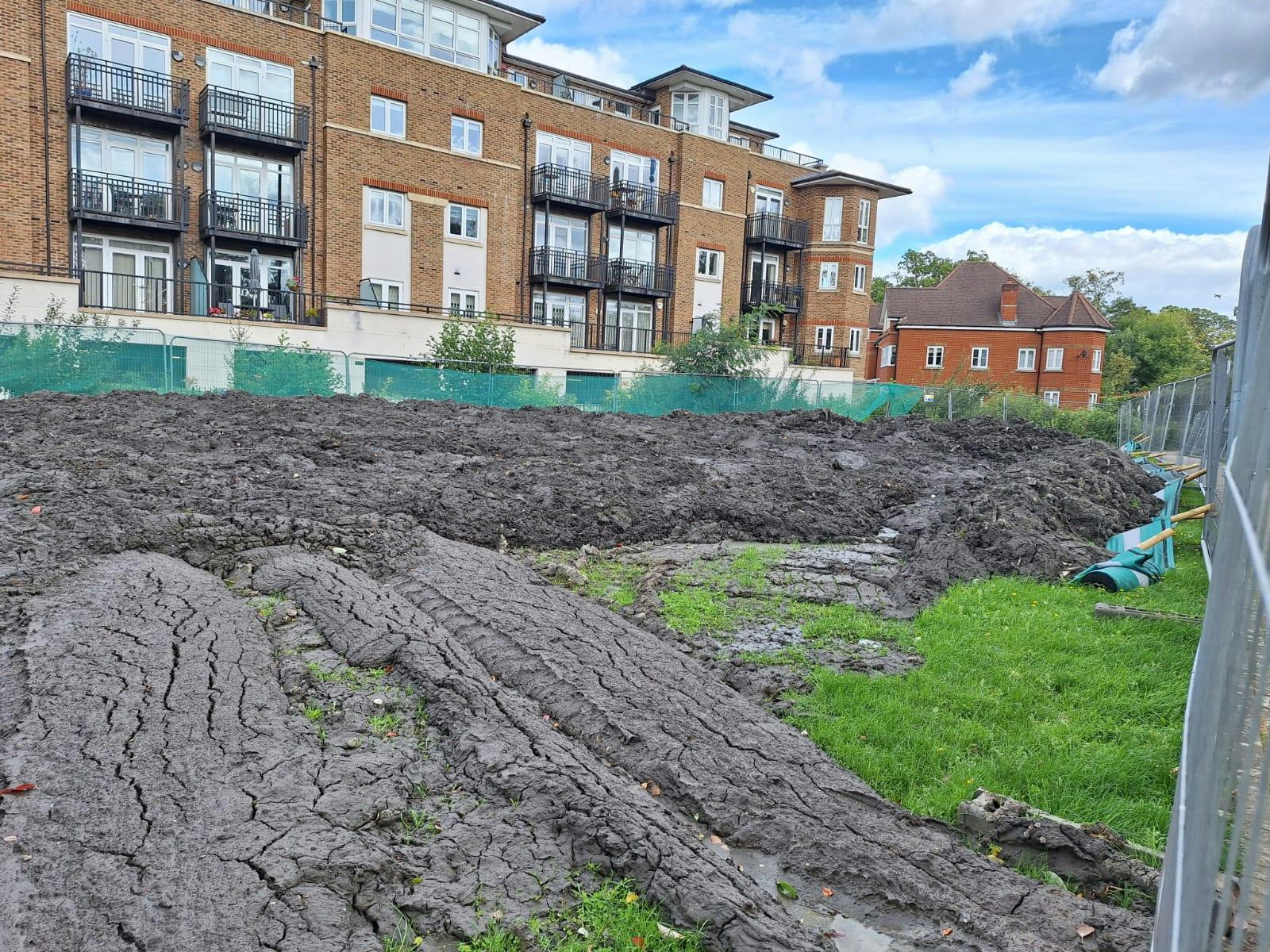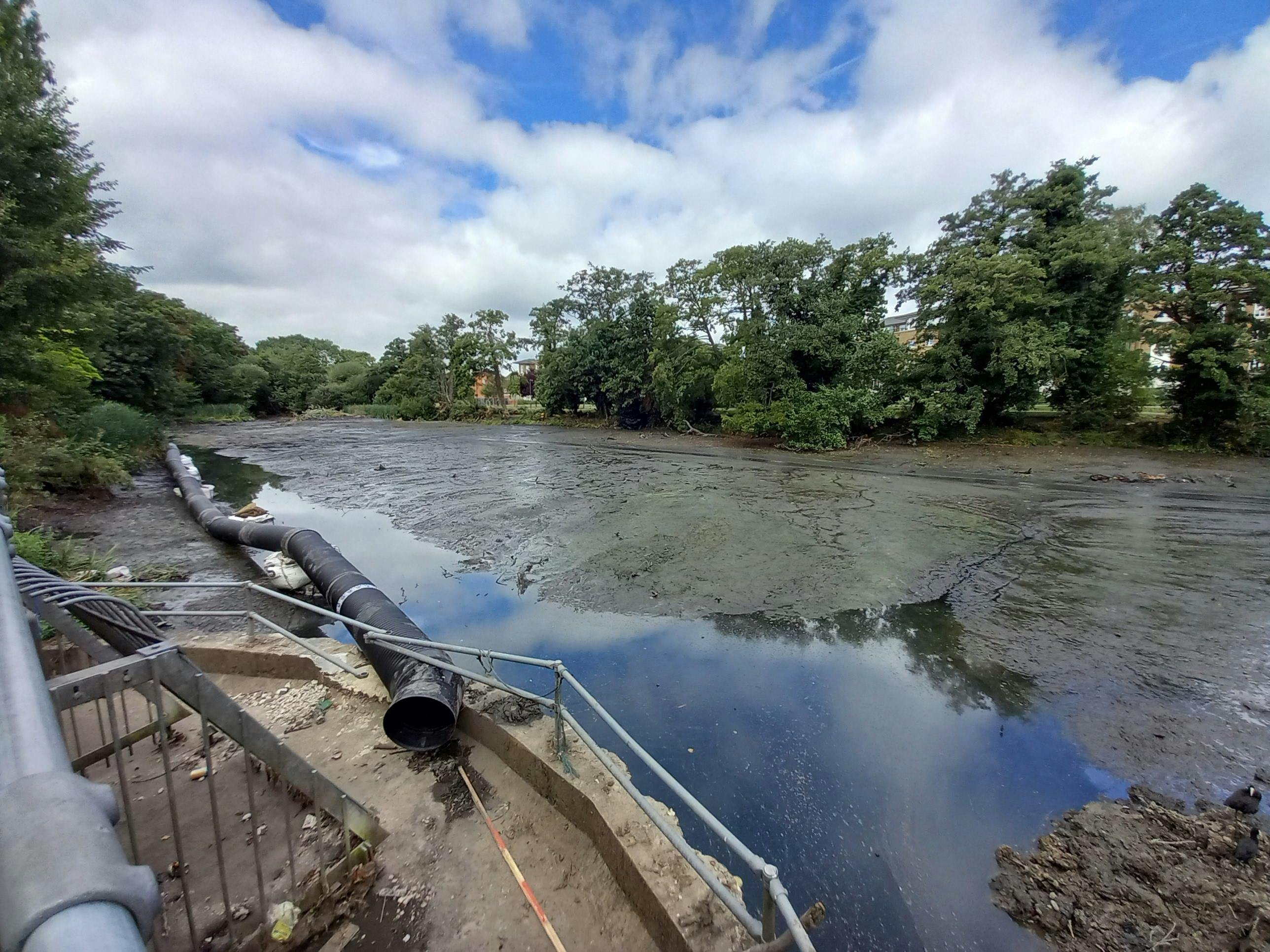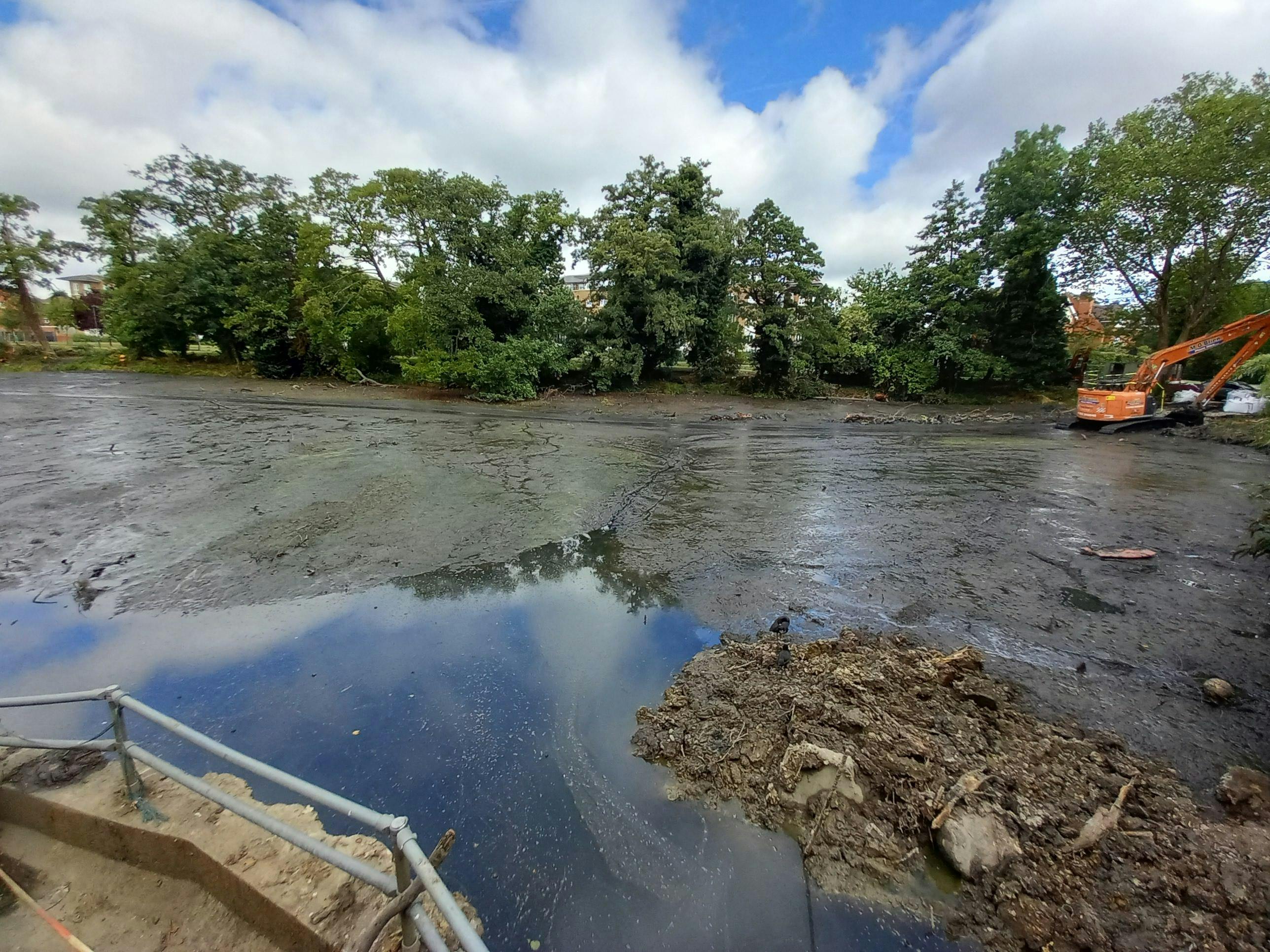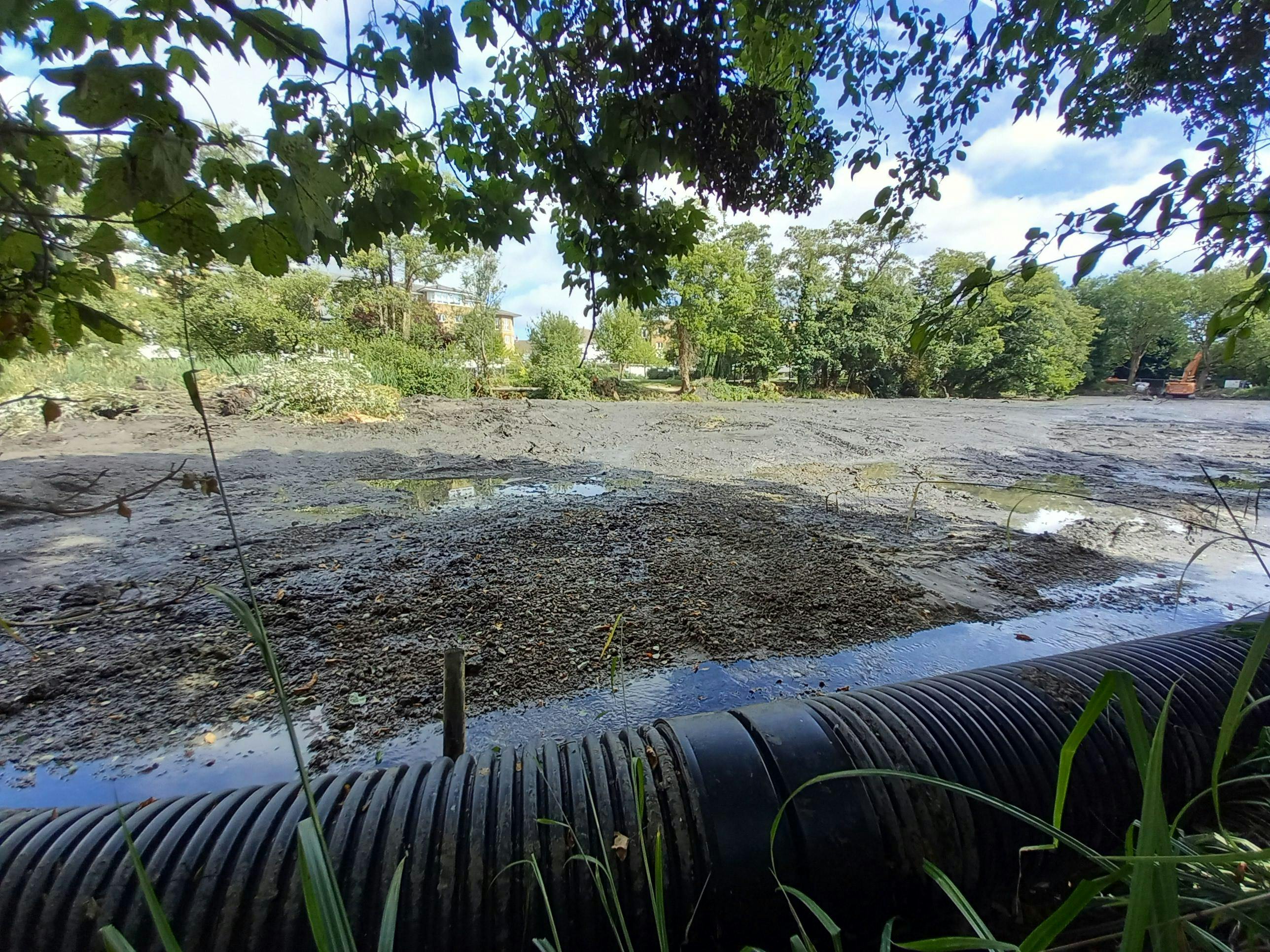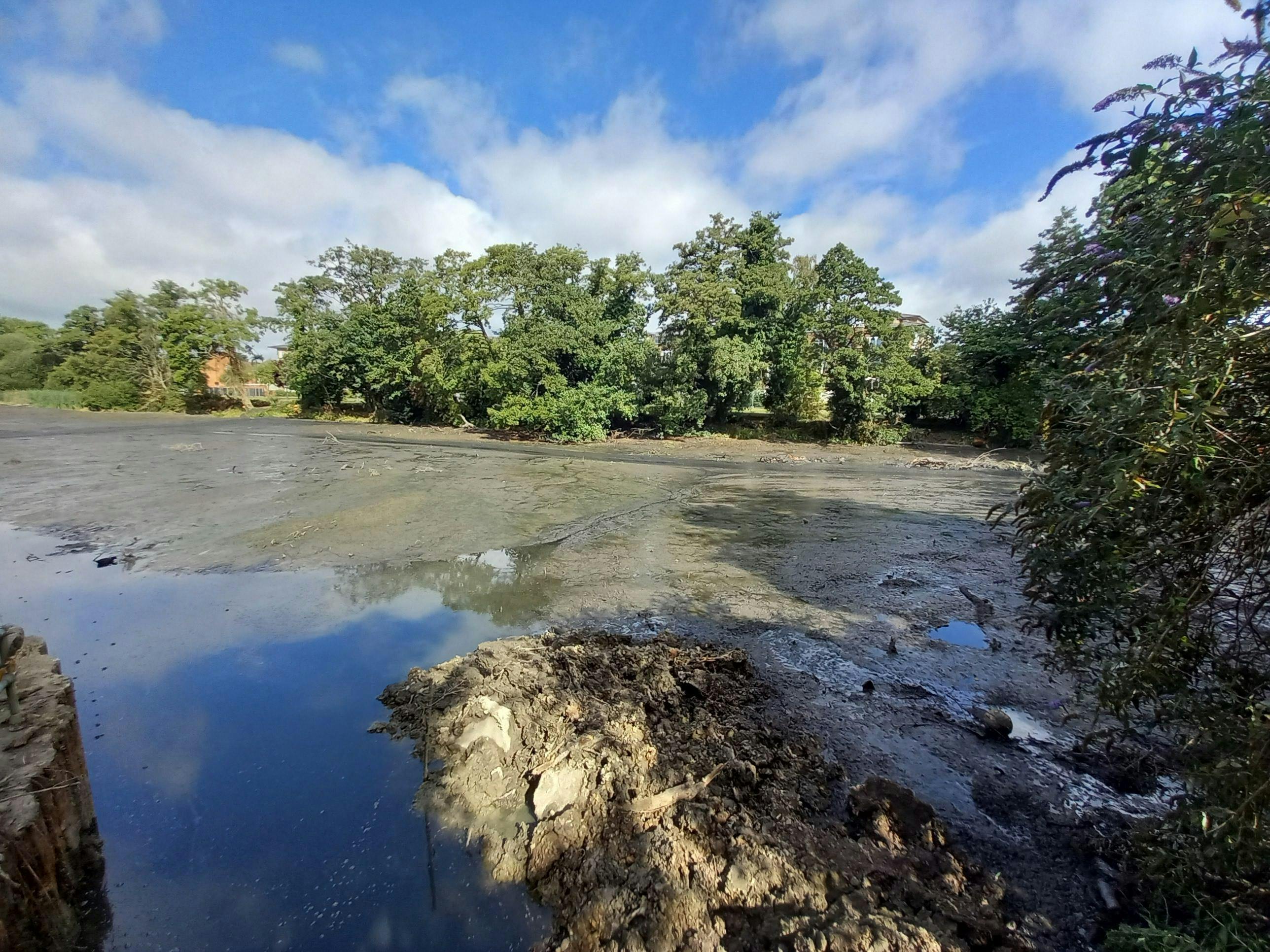Temple Pond Desilting Project
Welcome to the information page for the Temple Pond desilting project in Stanmore.
Introduction
Temple Pond is an open body of water covering a surface area of 6000-6500 m2, located south of Stanmore. It is situated on the Edgware Brook which is a main river (a tributary of the Silk Stream) as shown in the map below.
 Temple Pond River Map
Temple Pond River MapThe Pond is located near the headwaters of the Edgware Brook and Silk Stream, within the Brent catchment. The Temple Pond desilting project is therefore being completed under the wider “Action for Silk Stream” project being delivered by LB Harrow and LB Barnet to tackle the effects of climate change by making space for water, reducing flooding, and improving water quality in the Silk Stream catchment for the benefit of communities and the environment.
The Action for Silk Stream project has set out to deliver multiple nature-based solutions along river corridors and create sustainable drainage systems (SuDS) across the Silk Stream catchment as a complete flood resilience package.
Temple Pond has been identified as a key area that will form part of the solution.
The Problem
Silt, caused by a variety of factors such as heavy rain, road runoff silt and hydro carbons, and excess decaying vegetation, has built up in the pond over many years and poses a risk to public safety and wildlife.
Accumulated silt reduces the volume of water a pond can store, making it shallower and increasing the risk of flooding during heavy rainfall. Silted ponds can also cause significant damage to aquatic life as it reduces water quality, and can lead to decreased oxygen levels, which can suffocate fish and other aquatic animals. Additionally, silt can carry pollutants and nutrients that promote harmful algal blooms, further degrading the pond environment.
 Temple Pond – Accumulated Silt Levels
Temple Pond – Accumulated Silt LevelsThe Solution
To restore ecological health, and increase live storage in the pond it now requires desilting.
Desilting, also known as dredging, is the process of removing accumulated silt (fine sediment like sand, dirt, gravel, debris and organic matter) from the bottom of water bodies. This process helps restore the original depth and capacity of the pond, reducing the likelihood of flooding during heavy rainfall, and improves water flow. Desilting also removes pollutants, improving water quality and oxygen levels, promoting a healthier environment and creating space for new growth and more suitable habitats.
Project Proposals
Initial work has involved the removal of overgrown vegetation.
Areas will be fenced off for public safety, the river flow will be impounded by closing the penstock (sluice gate) in the upper flood storage area near the playground. The water in the pond will then be pumped out ahead of the silt being removed. The silt from the pond will be placed on the pond banks where it will remain for up to a few months to dewater, this will also allow organisms time to return to the pond and reduce the weight of the silt upon collection. During this period, the ponds ecosystems will restore themselves.
The illustrations below show pond conditions before and after desilting.
 Conditions before desilting (top), conditions after desilting (bottom)
Conditions before desilting (top), conditions after desilting (bottom)View the benefits of undertaking the desilting works.
The desilting works will commence on 7 July 2025 and are proposed to be completed by 30 September 2025, subject to weather conditions.
We plan to use the last 4 weeks of the programme to remove the silt to a licensed waste facility via Gordon Avenue so there will be intermittent partial and full closure of the path between Stanmore Park Estate and Gordon Avenue during vehicle movements; however, we will give advance notice of this by placing notices around the entrance and updates on this project page.
Update - 21 October 2025
We’re pleased to share that the desilting of Temple Pond is almost complete. All the silt has now been removed and safely taken to a licensed waste facility.
The temporary silt storage area in front of Castlereagh House is being re-turfed, and the bank around the pond has been levelled. To help the area recover, it will stay temporarily fenced with stock fencing over the winter. In spring, we’ll roll and sow new grass, look after it until it’s well established, then remove the fencing and hand the area over to our grounds maintenance team.
We’ll also be jet washing the footpath and carrying out a few small repairs to freshen it up.
For more information on how the project is being delivered, please refer to the Phased Programme of Works and the updated Site Set-Up and Traffic Plan.
Contact Details
Please see our Frequently Asked Questions for more information. Any enquiries about this project can be sent to: infrastructure@harrow.gov.uk
Sign-up for Updates
If you would like further updates on project activities, to talk about the desilting or to find out more about the wider Action for Silk Stream project, please register your interest on this webpage. If we receive enough interest from residents we will notify you of the on-site engagement activity.
Stay informed about the wider Action for Silk Stream project progression by signing up to the mailing list: linktr.ee/actionforsilkstream



